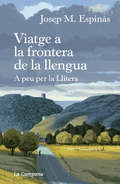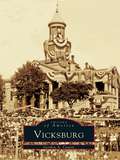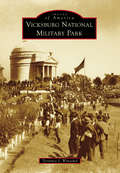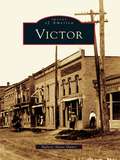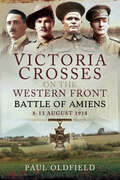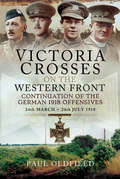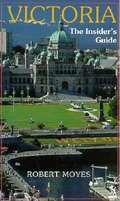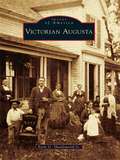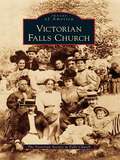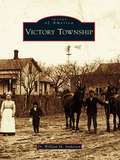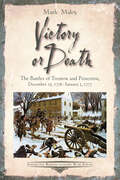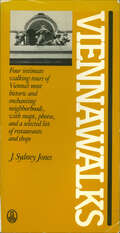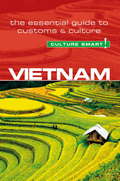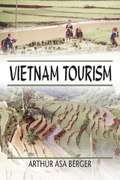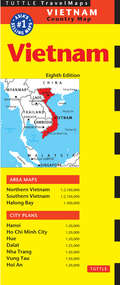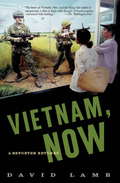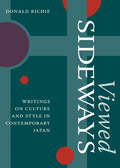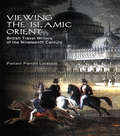- Table View
- List View
Viatge a la frontera de la llengua: A peu per la Llitera
by Josep Maria EspinàsOn és exactament la Llitera? Com s'hi viu? Quin català es parla en aquesta comarca de l'Aragó? La passió per caminar i descobrir ha dut a Josep M. Espinàs, aquesta vegada, a una terra plena d'interrogants per a molta gent. On és exactament la Llitera? Quin català es parla en aquesta comarca de l'Aragó? La passió per caminar i descobrir va dur Josep M. Espinàs a una terra de pas plena d'interrogants per a molta gent. El 1990, caminant per la Llitera amb sol i amb tempestes, amb totes les sorpreses d'un viatge com aquest, Espinàs converteix l'experiència d'anar a peu en una narració viva, en una crònica que es llegeix com si el lector també s'aventurés amb l'escriptor per camins desconeguts. "Tota la Llitera a peu?, això no ho ha fet mai ningú!", li van dir els lliterans. Viatge a la frontera de la llengua és una obra excepcional en la literatura de viatges de Josep M. Espinàs, tant per l'escenari com pels fets que s'hi narren. Amb aquest llibre, l'autor aporta un testimoni directe i apassionat dels pobles de la comarca.
Vicksburg
by Gordon A. CottonVicksburg, situated on the bluffs overlooking the Mississippi River, has played an important role in the state's history, from its heroic participation in the War Between the States to its continued contributions to Mississippi's churches, architecture, cotton farming, and industrial markets. Today a modern city, Vicksburg still embraces its Southern charm with its shady, tree-lined brick streets, well-kept historic buildings, and beautiful plantation homes. In this volume of over 200 images, you will experience Vicksburg as never before, viewing this fascinating river town throughout its years of growth and progress. Within these pages, the reader can trace the evolution of the scattered farms that evolved into plantations and the small trading posts that became successful mercantile establishments. Vicksburg brings to life many of the old ways: scenes of Catfish Row, where steamboats docked and laughter emanated from the waterfront shanties; images of famous actors who gave routine performances in the elegant Walnut Street Opera House; snapshots capturing the excitement of outdoor baptisms, parades, and political rallies; magnificent scenes of the Old Court House, the proud symbol of Vicksburg for over a century; and pictures and portraits of the soldiers, merchants, government officials, and everyday citizens who have called Vicksburg home.
Vicksburg National Military Park
by Terrence J. WinschelVicksburg National Military Park was established by Congress to "commemorate the campaign, siege and defense of Vicksburg," which many consider the most decisive campaign of the Civil War. The battlefield at Vicksburg is one of the largest and most heavily visited of the nation's historic sites. Beginning with the efforts of Union and Confederate veterans to gain Congressional action to establish the park, and continuing through veterans' work in land acquisition, road and bridge construction, and the dedication of the magnificent memorials and monuments that dot the landscape, Images of America: Vicksburg National Military Park features stunning photographs of the efforts and events that have made Vicksburg the "art park of the world." Also included are images of veterans' reunions and the work of the Civilian Conservation Corps, as well as a history of Vicksburg National Cemetery, where the remains of 17,000 Union soldiers and sailors are enshrined.
Vicksburg: Town and Country
by Gordon CottonThough best known for the forty-seven-day siege many think sealed the fate of the Confederacy, Vicksburg, Mississippi boasts several claims to fame. Located near the site of the first European settlement in the state, Vicksburg is also the first place in America where Coca-Cola was bottled and home to such historic figures as Jefferson Davis and Madam C.J. Walker. Within these pages, Vicksburg and its environs are explored and celebrated through the eyes of late-nineteenth- and twentieth-century photographers. From downtown street scenes to pastoral rural landscapes, Vicksburg: Town and Country is a compilation of photographs from 1870 to the present day. Coupled with informative captions,each image is a slice of history and a unique treasure for anyone seeking to understand the past. Born of the river, Vicksburg is a modern, bustling port and the scene of the best-marked battlefieldin the world, the Vicksburg National Military Park. From soldiers to scientists, merchants to educators, a colorful cast of characters has shaped the history of Vicksburg. City dwellers and rural residents alike are a part of this fascinating visual journey.
Victor
by Babette Mann HuberVictor tells the unique story of a historic community in the Finger Lakes region, just south of Rochester. It chronicles Victor's past as a Seneca Indian capital to the coming of Massachusetts settlers in the 18th century through to life as it was in the 20th century. With over 200 photographs, this book shows how people in rural upstate New York lived, played, studied, worked, and worshiped. The images are from the town and village archives, the Victor Historical Society, the Ontario County Historical Society, and private collections. Many are previously unpublished photographs, and several are by Fred Locke, an amateur photographer who is considered to be "the father of porcelain insulators."
Victoria Crosses on the Western Front: Battle of Amiens—8-13 August 1918
by Paul Oldfield“Invaluable to those guiding visitors and those visiting the battlefields of WWI . . . it vividly tells a story of combat and courage.” —FiretrenchIn the past, while visiting the First World War battlefields, the author often wondered where the various Victoria Cross actions took place. He resolved to find out. In 1988, in the midst of his army career, research for this book commenced and over the years numerous sources have been consulted.Victoria Crosses on the Western Front: Battle of Amiens is designed for the battlefield visitor as much as the armchair reader. A thorough account of each VC action is set within the wider strategic and tactical context. Detailed sketch maps show the area today, together with the battle-lines and movements of the combatants. It will allow visitors to stand upon the spot, or very close to, where each VC was won. Photographs of the battle sites richly illustrate the accounts. There is also a comprehensive biography for each recipient, covering every aspect of their lives warts and all: parents and siblings, education, civilian employment, military career, wife and children, death and burial/commemoration. A host of other information, much of it published for the first time, reveals some fascinating characters, with numerous links to many famous people and events.“Works both as an armchair guide and as a battlefield companion (although I’d opt for the Kindle version if I were traipsing across the fields of France). Well done to Paul Oldfield for producing another useful addition to Great War literature. 5 stars.” —Paul Nixon, Army Ancestry Research
Victoria Crosses on the Western Front: Battle of Amiens—8-13 August 1918
by Paul Oldfield“Invaluable to those guiding visitors and those visiting the battlefields of WWI . . . it vividly tells a story of combat and courage.” —FiretrenchIn the past, while visiting the First World War battlefields, the author often wondered where the various Victoria Cross actions took place. He resolved to find out. In 1988, in the midst of his army career, research for this book commenced and over the years numerous sources have been consulted.Victoria Crosses on the Western Front: Battle of Amiens is designed for the battlefield visitor as much as the armchair reader. A thorough account of each VC action is set within the wider strategic and tactical context. Detailed sketch maps show the area today, together with the battle-lines and movements of the combatants. It will allow visitors to stand upon the spot, or very close to, where each VC was won. Photographs of the battle sites richly illustrate the accounts. There is also a comprehensive biography for each recipient, covering every aspect of their lives warts and all: parents and siblings, education, civilian employment, military career, wife and children, death and burial/commemoration. A host of other information, much of it published for the first time, reveals some fascinating characters, with numerous links to many famous people and events.“Works both as an armchair guide and as a battlefield companion (although I’d opt for the Kindle version if I were traipsing across the fields of France). Well done to Paul Oldfield for producing another useful addition to Great War literature. 5 stars.” —Paul Nixon, Army Ancestry Research
Victoria Crosses on the Western Front: Continuation of the German 1918 Offensives, 24 March–24 July 1918
by Paul OldfieldThis illustrated WWI battlefield guide explores the heroic acts honored with Victoria Crosses—and the sites where they took place—in 1918 France. Historian and battlefield tour guide Paul Oldenfield spent years researching the Victoria Cross actions of the First World War and accurately locating where each event took place. He now shares his remarkable findings with battlefield visitors and armchair historians in this fascinating series of guidebooks. This volume in the Victoria Crosses on the Western Front series covers the first Battles of the Somme in 1918, the Battle of the Lys, and other combat operation in western France. A thorough account of each VC action is set within the wider strategic and tactical context. Detailed maps show the area today, together with the battle-lines and movements of the combatants, while photographs of the battle sites richly illustrate the accounts. Oldfield also includes a comprehensive biography for each recipient, covering their families, education, civilian employment, military career, death, and commemoration. A host of other information, much of it published for the first time, reveals some fascinating characters, with numerous links to many famous people and events.
Victoria: The Insider's Guide
by Robert MoyesAll the must-see, must-visit places in the beautiful "City of Gardens." Victoria, nestled jewel-like at the southern tip of Vancouver Island, offers a legion of transient pleasures to the visitor and more abiding satisfactions for permanent residents. Most immediately apparent is the superb setting. Bounded by water on three sides, with marine vistas that culminate in the snow-capped peaks of the Olympic Mountains across the Strait of Juan de Fuca, Victoria has grown up amidst a gently rolling landscape that never lacks for pastoral charm. With its balmy, Mediterranean climate, a pedestrian-oriented downtown whose nineteenth-century buildings are attractively built to a human scale, and a full range of sophisticated urban amenities, Victoria is the quintessential island retreat. The city can be a little bit smug, perhaps, but the locals are always eager to share their beautiful surroundings and easy-going lifestyle with tourists and recent arrivals alike.
Victorian Augusta
by Earle G. Shettleworth Jr.From the 1860s through the 1880s, local photographer Henry Bailey captured all aspects of Victorian life after the Civil War in Maine's capital city. Bailey's rare stereoscopic images depict downtown Water Street, the industrial north end, Capitol Park, the Togus veterans home, and numerous public buildings, churches, and residences. Through these historic images, Victorian Augusta presents a view of the world through one man's lens. Most of the vintage photographs in this volume have come from the collection of the Maine Historic Preservation Commission, which has acquired many Bailey stereographs once owned by the photographer and his family.
Victorian Falls Church
by Victorian Society at Falls ChurchFalls Church, Virginia, was settled in 1699 and named for its first church. Located near Washington, D.C., this rural farming community grew into an important crossroads during the 19th century. Prior to World War II, its most significant growth occurred during the Victorian era. The area and lifestyle of its residents were significantly impacted by the Northern migration into the South for better farmland; the Civil War; the expansion of railway service; the developing role as a suburb ofWashington; and military buildup during the Spanish-American War. This collection of vintage images portrays the people, places, and events that are central to the Victorian heritage of Falls Church.
Victory Township (Images of America)
by Dr William AndersonFounded two years after the end of the Civil War, the township's name heralded the Union victory. Blanketed with a variety of hardwoods and some white pine stands of timber, Victory Township was an untamed wilderness when the first settlers arrived. The first pioneers homesteaded in the southwest corner of the township near the Lincoln River. Soon the community of Victory Corners began to emerge and with its growth, aspiration to become the seat of government for Mason County. Until the railroad came to Ludington, this settlement was a legitimate contender. Immigrants, particularly Scandinavians, constituted a larger and next wave of settlers. These new residents tended to cluster, given their common culture and relationships. The Danish settlement became one of the most recognized places in the township. Farming became a way of life while ethnicity gave way to Americanization and Victory Township developed a strong sense of community. This illustrated history extends through the end of World War II when the boys came home and the forces of industrial growth reshaped the rural landscape. Each community had its unique character, yet this township is reflective of the experiences of many rural people in the Midwest.
Victory or Death: The Battles of Trenton and Princeton, December 25, 1776—January 3, 1777 (Emerging Revolutionary War Series)
by Mark MaloyAn overview of the military actions and battlefields of three consecutive engagements during the “ten crucial days” of the American Revolution.December 1776: Just six months after the signing of the Declaration of Independence, George Washington and the new American Army sit on the verge of utter destruction by the banks of the Delaware River. The despondent and demoralized group of men had endured repeated defeats and now were on the edge of giving up hope. Washington feared “the game is pretty near up.”Rather than submit to defeat, Washington and his small band of soldiers crossed the ice-choked Delaware River and attacked the Hessian garrison at Trenton, New Jersey, on the day after Christmas. He followed up the surprise attack with successful actions along the Assunpink Creek and at Princeton. In a stunning military campaign, Washington had turned the tables, and breathed life into the dying cause for liberty during the Revolutionary War.The campaign has led many historians to deem it as one of the most significant military campaigns in American history. One British historian even declared that “it may be doubted whether so small a number of men ever employed so short a space of time with greater or more lasting results upon the history of the world.”In Victory or Death, historian Mark Maloy not only recounts these epic events, he also takes you along to the places where they occurred. He shows where Washington stood on the banks of the Delaware and contemplated defeat, the city streets that his exhausted men charged through, and the open fields where Washington himself rode into the thick of battle. Victory or Death is a must for anyone interested in learning how George Washington and his brave soldiers grasped victory from the jaws of defeat.“Maloy faithfully recreates the patriotic story of Washington’s crossing and brings the events of this period to life. The inclusion of the travel guide with turn-by-turn directions and photographs of what the places look like today makes the story more tangible and gives readers the ability to follow and walk in the footsteps of the Continental Army.” —Michael Britt, ON POINT Magazine
Vidal in Venice
by Gore VidalThe history of Venice, interspersed with the author's journey there in 1981.
Video Night in Kathmandu
by Pico IyerMohawk hair-cuts in Bali, yuppies in Hong Kong and Rambo rip-offs in the movie houses of Bombay are just a few of the jarring images that Iyer brings back from the Far East.
Video Night in Kathmandu: And Other Reports from the Not-So-Far-East
by Pico IyerWhen Pico Iyer began his travels, he wanted to know how Rambo conquered Asia. Why did Dire Straits blast out over Hiroshima, Bruce Spingsteen over Bali and Madonna over all? If he was eager to learn where East meets West, how pop culture and imperialism penetrated through the world's most ancient civilisations, then the truths he began to uncover were more startling, more subtle, more complex then he ever anticipated. Who was hustling whom? When did this pursuit of illusions and vested interests, with it's curious mix of innocence and calculation, turn from confrontation into the mating dance? Iyer travelled to Bali where despite tourism he realised that Paradise might not be lost after all. He checked on how Tibet was faring as the word's last secret to be revealed to full view. In Nepal he saw how the Dharma path met Freak Street, and witnessed in China how doors locked to trade were thrown open with breathless courtesy. This is a world where the movie star has become a god and Rajiv Ghandi a celluloid hero and to travel with Iyer is to experience the seductions and ironies of today's Asian cultures - and our own.
Viennawalks: Four Intimate Walking Tours Of Vienna's Most Historic And Enchanting Neighborhoods
by J. Sydney JonesViennawalks by J. Sydney Jones is the classic walking guidebook of the Austrian capital from the Henry Holt Walks Series. It includes four intimate walking tours of Vienna's most historic and enchanting neighborhoods, with maps, photos, and a selected list of restaurants and shops.
Vietnam - Culture Smart!
by Geoffrey MurrayCulture Smart! provides essential information on attitudes, beliefs and behavior in different countries, ensuring that you arrive at your destination aware of basic manners, common courtesies, and sensitive issues. These concise guides tell you what to expect, how to behave, and how to establish a rapport with your hosts. This inside knowledge will enable you to steer clear of embarrassing gaffes and mistakes, feel confident in unfamiliar situations, and develop trust, friendships, and successful business relationships.Culture Smart! offers illuminating insights into the culture and society of a particular country. It will help you to turn your visit-whether on business or for pleasure-into a memorable and enriching experience. Contents include* customs, values, and traditions* historical, religious, and political background* life at home* leisure, social, and cultural life* eating and drinking* do's, don'ts, and taboos* business practices* communication, spoken and unspoken"Culture Smart has come to the rescue of hapless travellers." Sunday Times Travel"... the perfect introduction to the weird, wonderful and downright odd quirks and customs of various countries." Global Travel"...full of fascinating-as well as common-sense-tips to help you avoid embarrassing faux pas." Observer"...as useful as they are entertaining." Easyjet Magazine"...offer glimpses into the psyche of a faraway world." New York Times
Vietnam Style
by Luca Invernizzi Tettoni Bertrand De Hartingh Anna Craven-Smith-MilnesVietnam has long captured the imagination of travelers, both real and armchair. It is an appealing country, filled with natural beauty, tranquil village life and fascinating cities. Vietnam also has an inimitable architectural and interior design style, the product of its rich cultural heritage and the various influences of Chinese, French and other Western colonialism.Vietnam Style is an exploration of the balancing act between traditional vernacular design and architecture and the outside influences of colonialism. The unusual and striking new design styles created by melding these elements are a true cultural kaleidoscope of Vietnam today. Chinese-style shophouses, temples with Indian influences, Thai-style palaces, French Colonial civic and domestic buildings, and the variety of tribal and native wooden houses present in Vietnam Style offer an intimate look into the vibrant, yet virtually unknown world of modern Vietnamese architecture and design.
Vietnam Tourism
by Arthur Asa Berger Kaye Sung ChonExplore the travel/tourism possibilities of this exotic yet tourist-friendly countryVietnam Tourism presents a unique ethnographic-semiotic analysis of some of the most important touristic icons in Vietnamese culture. In addition, it offers a firsthand analysis of many aspects of daily life in Vietnam and a semiotic analysis of Vietnam&’s dominant cultural symbols. A twelve-page photo section brings vibrant images of this unique country to life.Vietnam Tourism also presents an essential overview of what Vietnam has to offer tourists, looking at the exciting possibilities-and the potential pitfalls-of visiting this extraordinary country. Although Vietnam is a Third World country, it has excellent tourism companies and many wonderful sites-from Halong Bay and Hue to extraordinary temples and beautiful beaches. The book paints a vivid portrait of this country&’s hidden gems and popular tourist destinations, exploring the problems and possibilities Vietnam faces in developing its tourism industry.In Vietnam Tourism, you&’ll find information that is essential for anyone who needs to be "in the know" about this increasingly popular tourist destination. This reader-friendly book will leave you better informed about: the rapid construction of hotels in important tourist sites: there are now hotels of all kinds-from super luxurious ones to middle-range, three-star hotels, down to very primitive hotels-in most of the country&’s important tourist venues daily life in Vietnam&’s teeming cities, in its religious enclaves, and in its unique rural areas the meaning and relevance (semiotics) of commonplace objects in Vietnam, including Pho (a traditional soup that is often eaten for breakfast and is found everywhere in the country), conical straw hats, spring rolls, pith helmets, dong (Vietnamese currency), water puppetry, etc. important sites that tourists often visit, including the Ho Chi Minh museum, Ha Noi, the Cu Chi Tunnels, the unforgettable Cao Dai Cathedral at Tay Ninh, the Mekong Delta, and Ho Chi Minh City (Saigon) images of Vietnam created by travel writers-what the tourist guidebooks have to say, and how they relate to the reality of the author&’s personal experience in VietnamAfter reading Vietnam Tourism, you (and your students) will have a wealth of knowledge to draw upon. This is an ideal book to read before visiting Vietnam yourself-or recommending/planning a trip for others. The fresh insights it presents will help make any trip to the region more rewarding for the traveler.
Vietnam Tourism: Policies and Practices
by Huong T. Bui Dr Giang T. Phi Long H. Pham Huong H. Do Andrew Le Dr Binh Nghiem-PhuVietnam has experienced rapid growth within its tourism industry during the past decades. This growth is part of Vietnam's opening economy allowing a wide range of forms of tourism. Vietnam Tourism: Policies and Practices provides a comprehensive review of tourism development in Vietnam. Part I outlines the history of tourism, the role and involvement of public and private sectors in governance and planning, and the markets for tourism. Part II offers analysis and assessment of various types of tourism in Vietnam, including marine and island, eco, heritage, dark and community-based tourism. Part III centres on current operational issues of tourism, hotels and events. The book provides an up-to-date analysis on Vietnamese tourism policy, structure, governance, and operations as well as various forms of tourism from both a theoretical and practical perspective by: · providing a comprehensive review in a single resource; · outlining public and private sector tourism; · addressing Vietnamese structure, governance and planning of tourism; · examining special interest tourism; · addressing current issues of industry's operations and management; · embracing local and global perspectives; · principles and practices applicable to Southeast Asia. Written by scholars with extensive research experience on tourism in Vietnam this book is a reliable source of reference for students, researchers and industry practitioners who are interested modern tourism specifically in Vietnam and Southeast Asia.
Vietnam Travel Map
by Periplus EditionsTheVietnam Travel Map from Periplus is designed as a convenient, easy-to-use tool for travelers. Designed to fit easily into a purse or pocket and created using durable coated paper, this map is made to open and fold multiple times, whether it's the entire map that you want to view or one panel at a time. Following highways and byways, this map will show you how to maneuver your way to banks, gardens, hotels, golf courses, museums, monuments, restaurants, churches and temples, movie theaters, shopping centers and more, including ALL the places you'll want to visit on your trip! This 8th edition area maps and city plans are scaled to: Northern Vietnam 1:2,100,000 Southern Vietnam 1:2,100,000 Halong Bay 1:300,000 Hanoi 1:20,000 Ho Chi Minh City 1:20,000 Hue 1:20,000 Dalat 1:25,000 Nha Trang 1:20,000 Vung Tau 1:50,000 Hoi An 1:20,000 Considered the number one publisher of maps for foreign tourists and travelers in Asia,Periplus Travel Maps cover most of the major cities and travel destinations in the Asia-Pacific region. The series includes an amazing variety of fascinating destinations, from the multifaceted subcontinent of India to the bustling city-state of Singapore and the 'western style' metropolis of Sydney to the Asian charms of Bali. All titles are regularly updated, ensuring they keep up with the considerable changes in this fast-developing part of the world. This extensive geographical reach and attention to detailmean thatPeriplus Travel Maps are the natural first choice for anyone traveling in the region.
Vietnam, Now: A Reporter Returns
by David LambNow in paperback: the extraordinary portrait of post-war Vietnam told by a journalist who covered the war and returned thirty years later to cover the peace
Viewed Sideways
by Donald RichieThis definitive new collection of essays by the writer Time calls "the dean of arts critics in Japan" ranges from Kyogen drama to the sex shows of Shinjuku, from film and Buddhism to Butoh and retro rock 'n' roll, from wasei eigo (Japanese/English) to mizushobai, the fine art of pleasing. Spanning some fifty years, these thirty-seven essays-most never anthologized before-offer cross-sections of Japan's enormous cultural power. They reflect the unique perspective of a man attempting to understand his adopted home.The writings of Donald Richie-film critic, reviewer, novelist, and essayist-have influenced generations of Japan observers around the world.
Viewing the Islamic Orient: British Travel Writers of the Nineteenth Century
by Pallavi Pandit LaisramThe Islamic Orient studies the travel accounts of four British travelers during the nineteenth century. Through a critical analysis of these works, the author examines and questions Edward Said’s concept of "Orientalism" and "Orientalist" discourse: his argument that the orientalist view had such a strong influence on westerners that they invariably perceived the orient through the lens of orientalism. On the contrary, the author argues, no single factor had an overwhelming influence on them. She shows that westerners often struggled with their own conceptions of the orient, and being away for long periods from their homelands, were in fact able to stand between cultures and view them both as insiders and outsiders. The literary devices used to examine these writings are structure, characterization, satire, landscape description, and word choice, as also the social and political milieu of the writers. The major influences in the author’s analysis are Said, Foucault, Abdel-Malek and Marie Louise Pratt.
